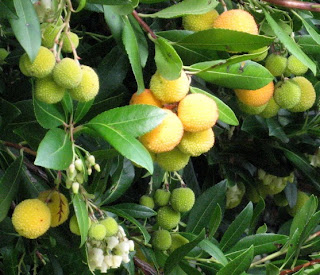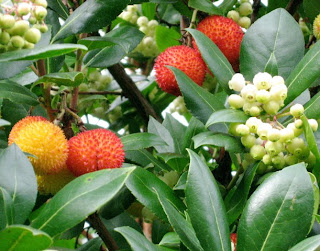Strawberry Trees Forever
- Marie McKinsey
- Oct 4, 2010
- 2 min read
Updated: May 25, 2024

Is it a tree? Is it a shrub?
With the right cultivar selection and a little artful pruning, it can be either. The standard species form of a Strawberry Tree (Arbutus unedo) can grow to nearly 30 feet tall and wide. If it is limbed up as it grows, it can look like this.

If you want a smaller version, choose cultivars like 'Compacta', which will get to about 10' x 10', 'Oktoberfest' to about 8' x 8', or 'Elfin King' about 5' x 5'.
Whichever one you choose, you will be rewarded with year-around interest. Strawberry trees have glossy, evergreen foliage. Large clusters of white, bell-shaped flowers appear in spring and, depending on availability of moisture, continue to bloom until fall. (The foliage, flowers and stems may look familiar to you if you live in the Pacific Northwest because strawberry trees are related to our native Madrone, Arbutus menziesii.) Flowers are followed in the fall by fruit that starts out looking like citrusy gum drops (see below left).
As it ripens, the fruit begins to look like strawberries; hence the name, strawberry tree. This fruit is edible, but bland. Even the birds will ignore it (an advantage from an ornamental point of view) until the tastier seeds and berries in the garden are gone.
Strawberry trees are wonderful choices for small gardens. They aren't fussy about soil. You can choose a cultivar that will fit the space available. They will tolerate some shade, although, like most plants, will flower and fruit more readily in sun. They can be shaped easily with light pruning.
Strawberry trees in the Seattle area are particularly full of fruit this fall. They are a unique addition to the autumn color palette that is so spectacular and long-lasting in our area.










Comments